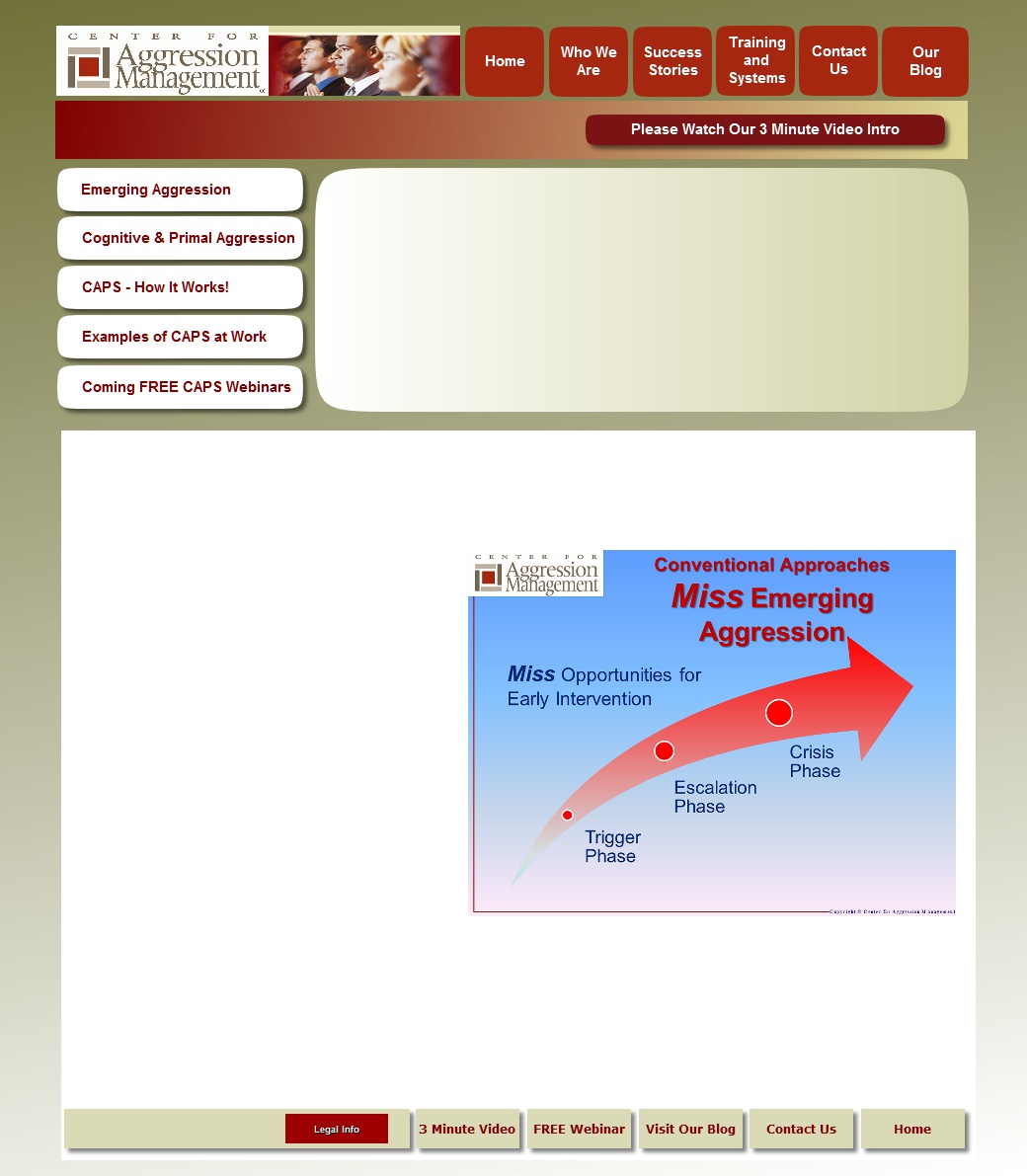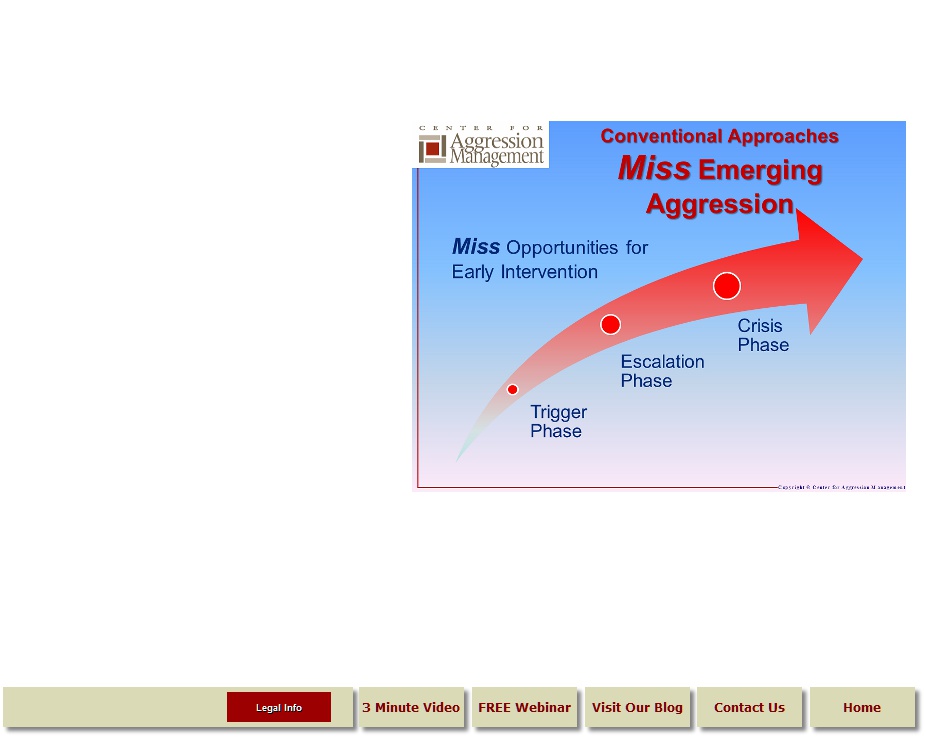|
|






All levels of aggressive behavior have adverse effects that are to
be avoided in the workplace, on campuses, in schools, in our
religious institutions, and in our personal lives.
As the individual progresses through the continuum of aggressive behavior, the aggressor will portray certain appearances, behaviors and characteristics that can be recognized and documented by properly trained individuals.
Armed with the proper skills, trained observers can recognize aggressive behavior in the early stages and distinquish aggressive behavior from simply aberant behavior. This is true regardless of the underlying root cause of the aggression.
Responding properly to aggression also requires special skills and knowledge.
A proper response at an early stage of aggression may de-escalate the aggressive behavior to the benefit of the potential aggressor and those impacted by the aggressor's behavior.
As the aggressive behavior continues to escalate, the proper response may be to remove the aggressor from the workplace, campus or school.
As the individual progresses through the continuum of aggressive behavior, the aggressor will portray certain appearances, behaviors and characteristics that can be recognized and documented by properly trained individuals.
Armed with the proper skills, trained observers can recognize aggressive behavior in the early stages and distinquish aggressive behavior from simply aberant behavior. This is true regardless of the underlying root cause of the aggression.
Responding properly to aggression also requires special skills and knowledge.
A proper response at an early stage of aggression may de-escalate the aggressive behavior to the benefit of the potential aggressor and those impacted by the aggressor's behavior.
As the aggressive behavior continues to escalate, the proper response may be to remove the aggressor from the workplace, campus or school.
Copyright 2012, All Rights Reserved,
Center for Aggression Management
Center for Aggression Management
Training and Systems that Prevent Violence
Aggressive Behavior is a Continuum
The Key to Violence Prevention -
Recognizing Emerging Aggression
Recognizing Emerging Aggression
Today's organizations struggle with nunerous issues that have challenged the creativity of threat
assessment, behavior intervention and security personnel.
Count them! Bullying, workplace violence, campus violence, the terrorist or "random shooter", ..... and the list goes on and on! These problems cannot be addressed without understanding that its not "Bullying" its "Aggresssion!" Its not "Workplace Violence", its "Aggression!" and so forth!
PREVENTION of violence that affects today's organizations requires the knowledge and skill to recognize aggression as it emerges. Without that knowledge and skill, most security, behavioral or crisis intervention efforts can only be reactive and not nearly as effective as we all would hope.
Count them! Bullying, workplace violence, campus violence, the terrorist or "random shooter", ..... and the list goes on and on! These problems cannot be addressed without understanding that its not "Bullying" its "Aggresssion!" Its not "Workplace Violence", its "Aggression!" and so forth!
PREVENTION of violence that affects today's organizations requires the knowledge and skill to recognize aggression as it emerges. Without that knowledge and skill, most security, behavioral or crisis intervention efforts can only be reactive and not nearly as effective as we all would hope.
If aggression is allowed to progress to more advanced stages, then intervention is more difficult, dangerous and essential to the safety of the
organization's environment.
Unfortunately, often used approaches like profiling, threat assessment, and mental health assessment either simply do not work or tend to miss the emergence of aggressive behavior. As a result, intervention often occurs after the aggressor has moved well into the crisis stage of aggression. By this time, the response will tend to be reactive and very difficult. In too many cases, the response may not happen until a horrific violent incident has occurred.
Unfortunately, often used approaches like profiling, threat assessment, and mental health assessment either simply do not work or tend to miss the emergence of aggressive behavior. As a result, intervention often occurs after the aggressor has moved well into the crisis stage of aggression. By this time, the response will tend to be reactive and very difficult. In too many cases, the response may not happen until a horrific violent incident has occurred.


















